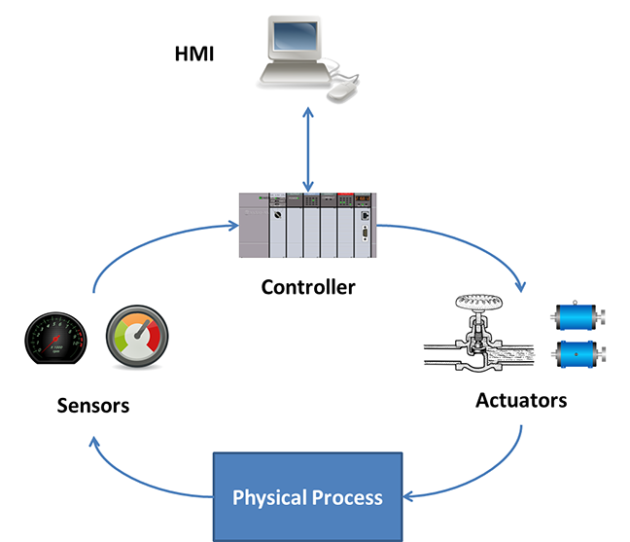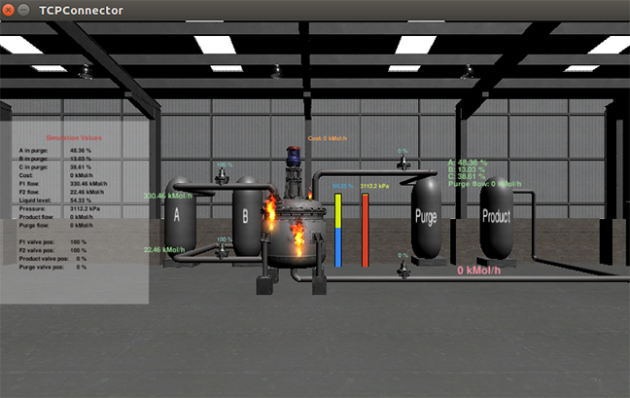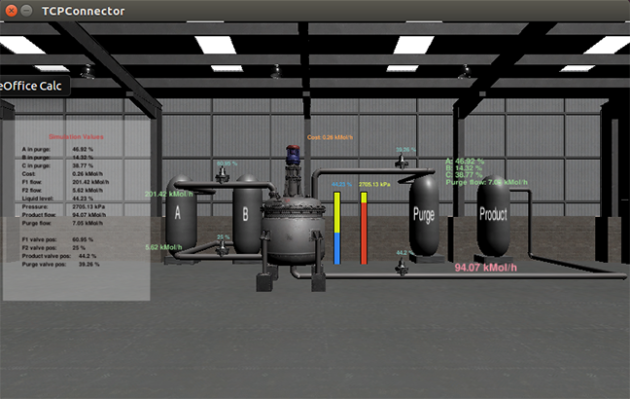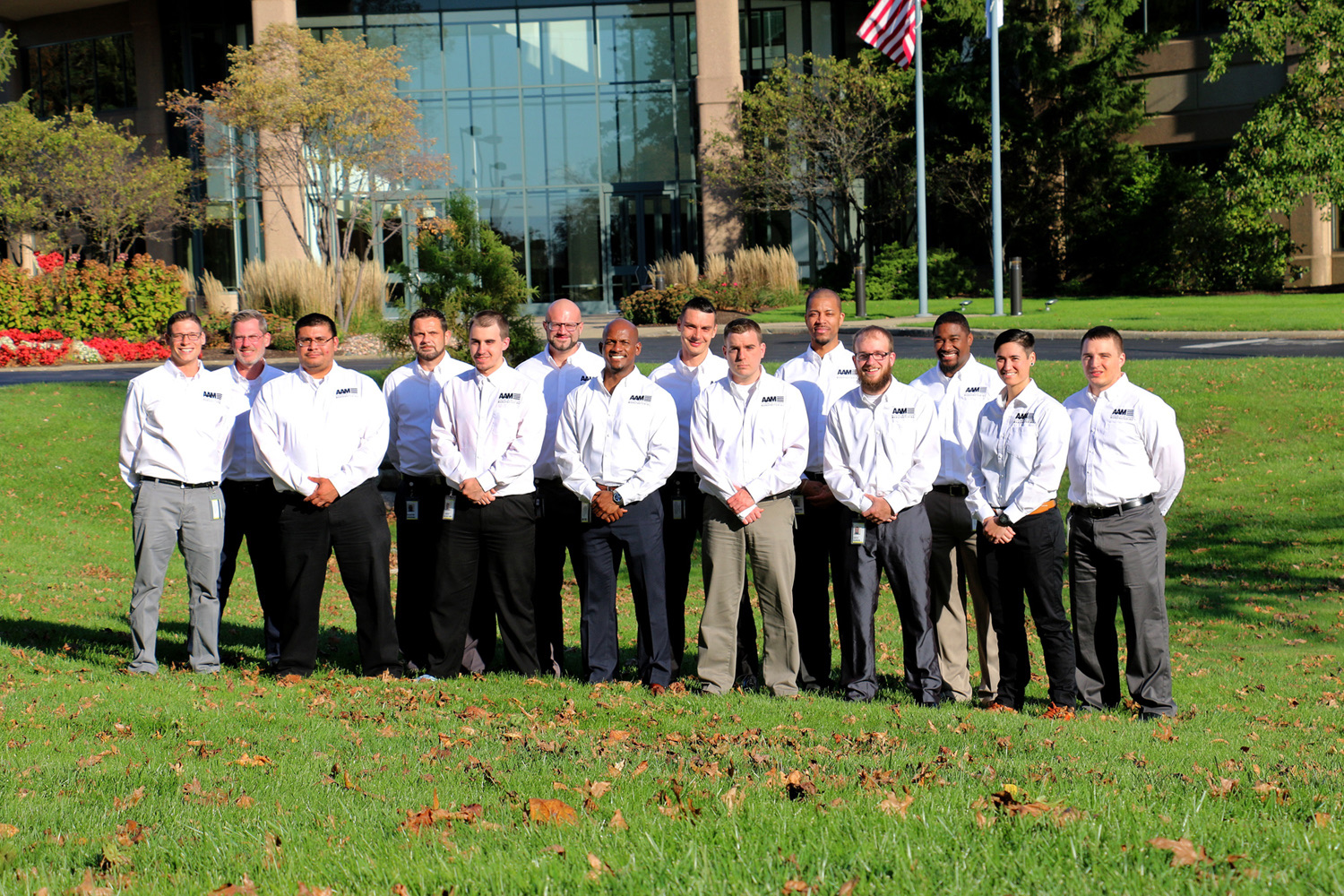
by Gary Mintchell | Sep 19, 2019 | Manufacturing IT, Operations Management, Software
This week saw the annual incarnation of the Ignition Community Conference from Inductive Automation in Folsom, CA focused on application of manufacturing software. The level of user conversations and idea exchanges is higher than anywhere else I attend.
I entered the building walking down the hallway amongst the exhibits of partner companies. Immediately the strength of MQTT, Sparkplug, and embedded Ignition stood out. The stands of OEMs Opto 22, Wago, EZAutomation, Moxa, Bedrock Automation, and Stratus Technologies swarmed with curious engineers.
MQTT is a light-weight messaging protocol that is now an open standard. Originally developed jointly by IBM and Arlen Nipper, now CTO of Inductive Automation partner Cirrus Link, MQTT is also widely deployed in IT applications.
Family obligations cut my stay, but I got a sense of what is important. Last year’s focus was Ignition 8, a major update to the core product. This year’s focus included the various aspects of the ecosystem that has sprung up through some patient nurturing by Inductive Automation executives.
Free training has been a hallmark. Examples cited included college student interns at customer sites taking the online class and then developing a significant application–all during their summer internship. It’s that easy to learn and develop.
Inductive has expanded its university partnerships for additional training and has also greatly expanded its international presence. Partnerships include a growing number of OEMs who package Ignition within products and systems integrators out solving interesting problems for their customers.
This is called the “Community Conference” because of the intense community of users.
By the way, customers often tell me that the product is rock solid, but what convinced them to change software suppliers–not an easy undertaking–is the innovative pricing model originally developed by founder (and president/CEO) Steve Hechtman. The model drives cost of ownership down for customers, and, while Inductive Automation is a private company and does not release financials, when I pump Steve for information, he smiles broadly.
Oh, and competitors are trying to find a way to compete with their pricing. That should be interesting.
Many, if not most, companies I cover are earnestly trying to build an ecosystem of partners. Inductive Automation patiently assembled an impressive one.
[Disclaimer: Inductive Automation is my major sponsor, but I’m not paid to be anything but my usual objective, analytical self observing the industry.]

by Gary Mintchell | Aug 24, 2018 | Automation, Operator Interface, Technology, Workforce
Simulators are great training tools. It sure beats flying 777s around for your annual pilot recert. Gaming technology has become so good along with many other technologies, that operators of process plants and machinery should be well trained to respond appropriately to any emergency.
Georgia Institute of Technology sent this information about an advancement in simulation for operator training. Good stuff.
A simulator that comes complete with a virtual explosion could help the operators of chemical processing plants – and other industrial facilities – learn to detect attacks by hackers bent on causing mayhem. The simulator will also help students and researchers understand better the security issues of industrial control systems.

This flow chart shows data flows within a simulated chemical processing facility.
Facilities such as electric power networks, manufacturing operations and water purification plants are among the potential targets for malicious actors because they use programmable logic controllers (PLCs) to open and close valves, redirect electricity flows and manage large pieces of machinery. Efforts are underway to secure these facilities, and helping operators become more skilled at detecting potential attacks is a key part of improving security.

Screen captures show a simulated explosion in a chemical processing plant precipitated by a cyberattack on the system.
“The goal is to give operators, researchers and students experience with attacking systems, detecting attacks and also seeing the consequences of manipulating the physical processes in these systems,” said Raheem Beyah, the Motorola Foundation Professor in the School of Electrical and Computer Engineering at the Georgia Institute of Technology. “This system allows operators to learn what kinds of things will happen. Our goal is to make sure the good guys get this experience so they can respond appropriately.”
Details of the simulator were presented August 8 at Black Hat USA 2018, and August 13 at the 2018 USENIX Workshop on Advances in Security Education. The simulator was developed in part by Atlanta security startup company Fortiphyd Logic, and supported by the Georgia Research Alliance.
The simulated chemical processing plant, known as the Graphical Realism Framework for Industrial Control Simulations (GRFICS), allows users to play the roles of both attackers and defenders – with separate views provided. The attackers might take control of valves in the plant to build up pressure in a reaction vessel to cause an explosion. The defenders have to watch for signs of attack and make sure security systems remain operational.

Screen capture shows a chemical processing plant in which critical parameters are rising due to false process data and control commands injected by an attacker.
Of great concern is the “man-in-the-middle” attack in which a bad actor breaks into the facility’s control system – and also takes control of the sensors and instruments that provide feedback to the operators. By gaining control of sensors and valve position indicators, the attacker could send false readings that would reassure the operators – while the damage proceeded.
“The pressure and reactant levels could be made to seem normal to the operators, while the pressure is building toward a dangerous point,” Beyah said. Though the readings may appear normal, however, a knowledgeable operator might still detect clues that the system has been attacked. “The more the operators know the process, the harder it will be to fool them,” he said.
The GRFICS system was built using an existing chemical processing plant simulator, as well as a 3D video gaming engine running on Linux virtual machines. At its heart is the software that runs PLCs, which can be changed out to represent different types of controllers appropriate to a range of facilities. The human-machine interface can also be altered as needed to show a realistic operator control panel monitoring reaction parameters and valve controller positions.
“This is a complete virtual network, so you can set up your own entry detection rules and play on the defensive side to see whether or not your defenses are detecting the attacks,” said David Formby, a Georgia Tech postdoctoral researcher who has launched Fortiphyd Logic with Beyah to develop industrial control security products. “We provide access to simulated physical systems that allow students and operators to repeatedly study different parameters and scenarios.”
GRFICS is currently available as an open source, free download for use by classes or individuals. It runs on a laptop, but because of heavy use of graphics, requires considerable processing power and memory. An online version is planned, and future versions will simulate the electric power grid, water and wastewater treatment facilities, manufacturing facilities and other users of PLCs.
Formby hopes GRFICS will expand the number of people who have experience with the security of industrial control systems.
“We want to open this space up to more people,” he said. “It’s very difficult now to find people who have the right experience. We haven’t seen many attacks on these systems yet, but that’s not because they are secure. The barrier for people who want to work in the cyber-physical security space is high right now, and we want to lower that.”
Beyah and Formby have been working for several years to increase awareness of the vulnerabilities inherent in industrial control systems. While the community still has more to do, Beyah is encouraged.
“Several years ago, we talked to a lot of process control engineers as part of the NSF’s I-Corps program,” he said. “It was clear that for many of these folks then, security was not a major concern. But we’ve seen changes, and lots of people are now taking system security seriously.”

by Gary Mintchell | Mar 1, 2018 | Automation, Operations Management
Honeywell released three announcements while I am still recapping the ARC Forum. There are one or two more to go. Thèse regarded maintenance management, simulation, and safety under the umbrella of Connected Plant.
The first is a new offering as part of Honeywell Connected Plant that allows customers to more effectively manage the maintenance and operations of their industrial equipment. The new Honeywell Connected Plant Asset Performance Insight connects the customers’ assets and equipment to the cloud, and applies analytical models from Honeywell and its partners, so that customers can avoid unplanned downtime and unnecessary maintenance.
“In today’s competitive business climate, in which asset capacity is often sold out, equipment performance is key to increased profitability,” said Richard Shaw, general manager, Honeywell Connected Plant. “With operational and maintenance-induced equipment failures accounting for most of the unplanned downtime, industrial companies are looking to digital transformation and IIoT to make sense out of huge amounts of data. Honeywell Connected Plant and our new Asset Performance Insight will help our customers operate more strategically and effectively.”
Honeywell designed the Asset Performance Insight solution to be rapidly deployed to customers through pre-configured templates. These templates are based on the company’s deep industry experience and real-world customer challenges enhanced with advanced analytics. The offering can also be configured and tailored to customers’ specific needs, making it extremely flexible.
The second is a cloud-based simulation tool that uses a combination of augmented reality (AR) and virtual reality (VR) to train plant personnel on critical industrial work activities. With as much as 50 percent of industrial plant personnel due to retire within the next five years, the Honeywell Connected Plant Skills Insight Immersive Competency is designed to bring new industrial workers up to speed quickly by enhancing training and delivering it in new and contemporary ways.
Honeywell’s advanced training solution combines mixed reality with data analytics and Honeywell’s 25 years of experience in worker competency management to create an interactive environment for on-the-job training. It uses Microsoft’s HoloLens, the world’s first and only self-contained holographic computer, and Windows Mixed Reality headsets to simulate various scenarios for Honeywell’s C300 controller – such as primary failure and switchovers, cable and power supply failure – that train and test personnel on their skills.
“Megatrends such as the aging workforce are putting increased pressure on industrial companies and their training programs,” said Youssef Mestari, program director, Honeywell Connected Plant. “There is a need for more creative and effective training delivered through contemporary methods such as Immersive Competency, ultimately empowering industrial workers to directly improve plant performance, uptime, reliability and safety.”
Simulating specific job activities through virtual environments, which are accessed through the cloud, Honeywell’s solution offers a natural way to interact and communicate with peers or a trainer. Similar to a flight simulator, trainees can safely experience the impacts of their decisions. This approach improves skill retention versus traditional training methods by up to 100 percent and reduces the length of technical training by up to 66 percent. Additionally, the employees’ training progress is tracked as part of a formal competency management system.
And wrapping up is a new solution for real-time safety monitoring of workers in plant and remote operations. Honeywell Connected Plant Skills Insight Personal Gas Safety helps to protect lives and enable faster response in case of hazardous leaks or worker injury.
The solution’s wearable gas detectors monitor gas, radiation and dust, and are tightly integrated with Honeywell’s distributed control system, Experion® Process Knowledge System (PKS). In case of harmful exposures, man-down or panic alarms of workers in the field, accurate, automated alarms now alert control room operators in real time. In addition, safety teams can take advantage of powerful tools embedded in Experion PKS to provide detailed trending, reporting and data analysis of the gas detectors to further ensure safe operations.
“Monitoring worker safety and ensuring proper response to emergencies are top priorities for industrial producers,” said Adrian Fielding, marketing director, Integrated Protective Solutions for Honeywell Process Solutions (HPS). “Personal Gas Safety gives plant operators eyes and ears in the field to improve their situational awareness, helping avoid potentially life-threatening conditions while also providing workers with the assurance that help will be on the way quickly if they need it.”

by Gary Mintchell | Nov 27, 2017 | Workforce
Rockwell has had a strong training program for many years. I took my first week-long class in 1991 or 1992. Altogether I have taken about six classes—controls, PLCs, drives, motor control centers, software. I know how intense the training can be.
Last week I posted a podcast of thoughts from Rockwell Automation’s annual series of events held the week prior to Thanksgiving. Now I’m in Spain at yet another conference and trying to get caught up on posts before I start a flurry of posts from here.
So first—training, diversity, and education.
When the company showed off some graduates of its new Academy of Advanced Manufacturing and they talked about the intensity of the three month program, memories came back.

Veterans
ManpowerGroup and Rockwell Automation celebrated the first military veterans to graduate from the Academy of Advanced Manufacturing and secure high-paying jobs in the rapidly-evolving manufacturing industry.
The 12-week program launched in August combines classroom learning with hands-on laboratory experience. Veterans are trained in Rockwell Automation’s state-of-the art facility in Mayfield Heights, Ohio for in-demand jobs in advanced manufacturing. All of the graduates have job offers and more than half have multiple job offers that significantly increase — some graduates even doubling — their previous salaries.
“This program felt like it was made just for me,” says Travis Tolbert, U.S. Navy veteran and academy graduate. “It focused on controls and automation, which is something I’ve always wanted to do, but was never able to do until now. The academy helped me take my military skills and understand how I could make them relevant for jobs outside of the Navy.”
“In recognition of Veterans Day, on behalf of Rockwell and ManpowerGroup, we thank all our veterans for their service,” said Blake Moret, CEO of Rockwell Automation. “We are honored to recognize our first military veterans to graduate the Academy of Advanced Manufacturing. We’ve seen their unique combination of core work and tech-savvy skills evolve to successfully position them for careers in the industry. We’re confident this program will help solve a challenge critical to the growth of advanced manufacturing.”
If the accomplishments and future prospects of these veterans didn’t bring a tear or two, you had to have no feelings.
Women
Rockwell Automation has been announced as a 2017 Catalyst Award winner. The Catalyst Award honors innovative organizational approaches that address the recruitment, development and advancement of women and have led to proven, measurable results.
“We are thrilled to receive this recognition from Catalyst for our Culture of Inclusion journey, demonstrating our commitment to our employees, customers and community,” said Moret. “Our people are the foundation of our company’s success, and so we must create an environment where employees can and want to do their best work every day.”
The Culture of Inclusion journey began in 2007 with senior leaders renewing their commitment to diversity, inclusion and engagement. This was in response to employee data showing that women and people of color at the company had lower retention rates than white men, and there were gaps in the levels of representation for key demographics. A driving force of this strategy is the knowledge that in order to effect sustainable change, the dominant group—in this case, white men—must be aware of the impact of their privilege, be engaged, and partner with women and underrepresented groups in a meaningful way.
Results: Between 2008 and 2016, women’s representation in the U.S. increased from 11.9% to 23.5% among vice presidents, from 14.7% to 23.2% among directors, and from 19.3% to 24.3% at the middle-manager level. At the most senior leadership levels, women’s representation doubled, increasing from 11.1% to 25.0% among the CEO’s direct reports and from 11.1% to 20.0% on the board of directors. In addition, the Rockwell Automation voluntary turnover is well below the benchmark average for women.
Youth
On the Automation Fair show floor, Jay Flores, Rockwell Automation global STEM ambassador, led me on a tour of the FIRST Robotics area and explained how Rockwell is continuing its commitment to the program.
It announced a $12M, four-year commitment to FIRST—For Inspiration and Recognition of Science and Technology—founded to inspire young people’s interest and participation in science and technology.
Over the past 10 years, Rockwell Automation has provided more than $15M of broad-based support to address the critical need to fill science, technology, engineering and math (STEM) jobs that drive innovation. Many of these jobs go unfilled because of both the lack of awareness of the kinds of high-tech jobs available and the lack of skills to qualify for today’s needs.
“Through our technology and people, we are helping to inspire the next generation of innovators to fill the talent pipeline for our customers and for our company,” said Moret. “Our strategic partnership with FIRST helps us increase our reach and visibility to STEM students around the world.”
In addition to being a global sponsor of the FIRST LEGO League program and sole sponsor of the FIRST Robotics Competition (FRC) Rockwell Automation Innovation in Control Award, nearly 200 Rockwell Automation employees around the world donate their time for the FIRST programs, and more than 300 employees volunteer for the organization in other capacities. The company also donates products integral to FIRST program games and scoring. These product donations are specifically used for the FIRST Robotics Competition playing fields and scoring systems, and they are included within the parts kits teams use to build their robots.
“This generous, multiyear commitment from Rockwell Automation will allow us to focus on the strategic aspects of our partnership while continuing to help scale our programs and expose students to a broader range of industry-leading products and applications,” said Donald E. Bossi, president, FIRST. “The company has a long, rich history of supporting FIRST.”

by Gary Mintchell | Nov 20, 2017 | Automation, Commentary, Podcast
Last week was Rockwell Automation week. I have one more major manufacturer show for the year—Discover Madrid with Hewlett Packard Enterprise next week.
I recorded a quick podcast recap of the week. I have so much material to digest, that I am still working through it.
Three quick points:
1. There was no discussion of the Emerson proposed acquisition of Rockwell. [My view after a few hallway conversations-very few-is that David Farr, Emerson’s CEO, needs to do something drastic to improve his performance. Emerson has been divesting lately, and his performance is below that of his legendary predecessor. He catches Rockwell with a CEO who have been in office just a little over a year. Maybe he thought he could surprise Moret and get a steal? What if the board prefers Moret to run the combined Emerson Rockwell company? Farr as chairman and Moret as CEO? Weird but interesting thought.]
2. Rockwell’s training is rigorous and thorough. I’ve been through at least 5 classes myself (controls, PLCs, drives, motor control centers, software). I know. Interesting and moving presentation on a joint effort of Manpower and Rockwell training veterans for second careers.
3. Open and scalable. I spent an hour learning about Rockwell’s new adoption of OPC UA. Then at least 1.5 hours on Rockwell software where the key word is scalable. The new analytics application appears to be well done and powerful (I only saw a demo during the keynotes and had some conversations, but it looked good).
You can subscribe to the podcast on iTunes or Overcast or you favorite pod catcher. I’d really appreciate a good rating and some referrals. It has a good audience considering the size of the market.













